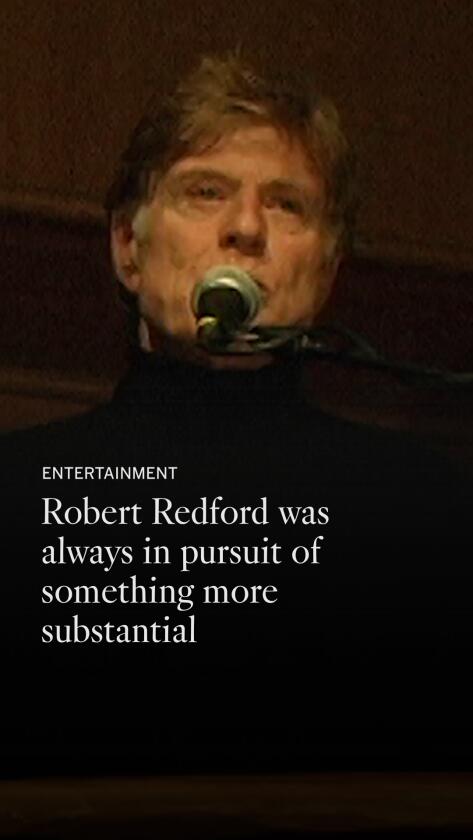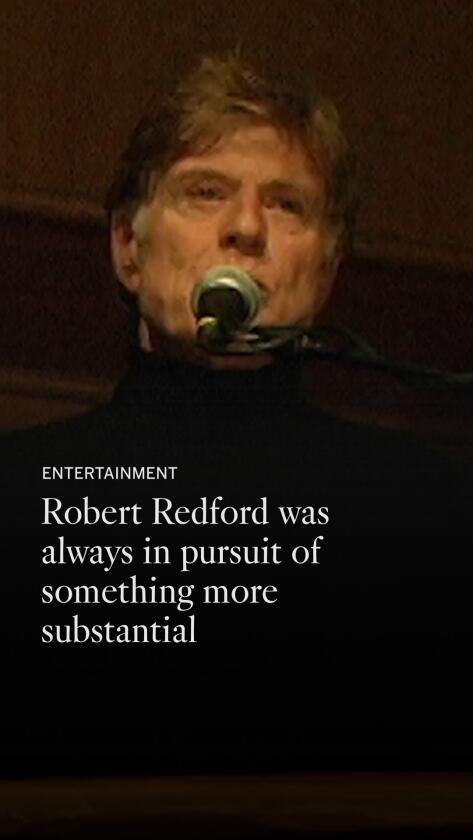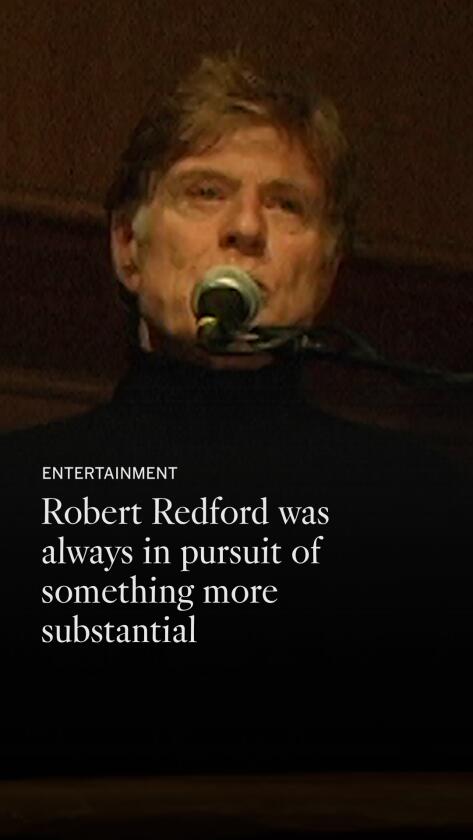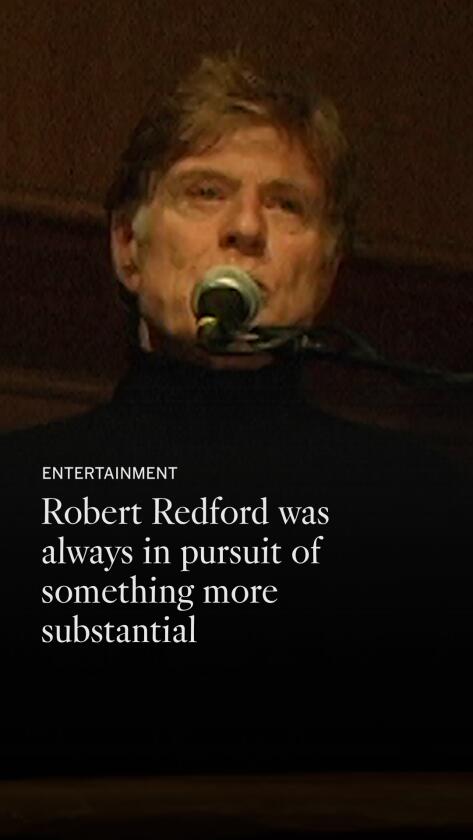Remembering Robert Redford and the latest on Jimmy Kimmel
Welcome to Screen Gab, the newsletter for everyone who wasn’t expecting to hear this much about “Celebrity Family Feud” in 2025.
The talk around Hollywood on Wednesday — and beyond — has centered on late night after Walt Disney Co.-owned broadcaster ABC said it was suspending “Jimmy Kimmel Live!” indefinitely over the host’s remarks about right-wing activist Charlie Kirk and his accused killer. (Airing in its place so far? You guessed it, “Celebrity Family Feud.”) Let us help you get up to speed on the situation. Media reporters Stephen Battaglio and Meg James have an inside look behind the decision to bench Kimmel. The decision, of course, has rocked the late-night circuit, and Kimmel’s colleagues didn’t shy away from using their own platforms to address the matter — here’s what they had to say. And does Kimmel’s suspension have echoes to ABC’s firing of Roseanne Barr? Culture and representation reporter Greg Braxton explains the parallels and differences here. Our reporters were also at the demonstration that took place outside the El Capitan Entertainment Centre in Hollywood, where Kimmel tapes his show.
For the record:
3:09 p.m. Sept. 19, 2025An earlier version of this newsletter said ABC’s “High Potential” airs on Wednesdays. It airs on Tuesdays.
That wasn’t the only shocking news to hit Hollywood this week. Robert Redford, a generational movie star and titan of filmmaking, died Tuesday at the age of 89. If you haven’t already, take a moment to read our obituary that captures why he was one of Hollywood’s most influential figures. Film reporter Mark Olsen also dives into the legendary actor’s impact on independent cinema through the Sundance Institute. And members of the film team explain Redford’s legacy through 10 essential films.
Also in this week’s Screen Gab, Judy Reyes stops by Guest Spot to discuss her role as tough but compassionate Lt. Selena Soto in ABC’s hit “High Potential,” which returned for Season 2 this week, and how she’s feeling about reprising one of her most well-known characters, Carla Espinosa, in the upcoming “Scrubs” reboot. Plus, our streaming recommendations include a documentary telling the remarkable true story of four Colombian children who survived a plan crash and 40 days alone in the Amazon rainforest, and a Redford classic.
ICYMI
Must-read stories you might have missed
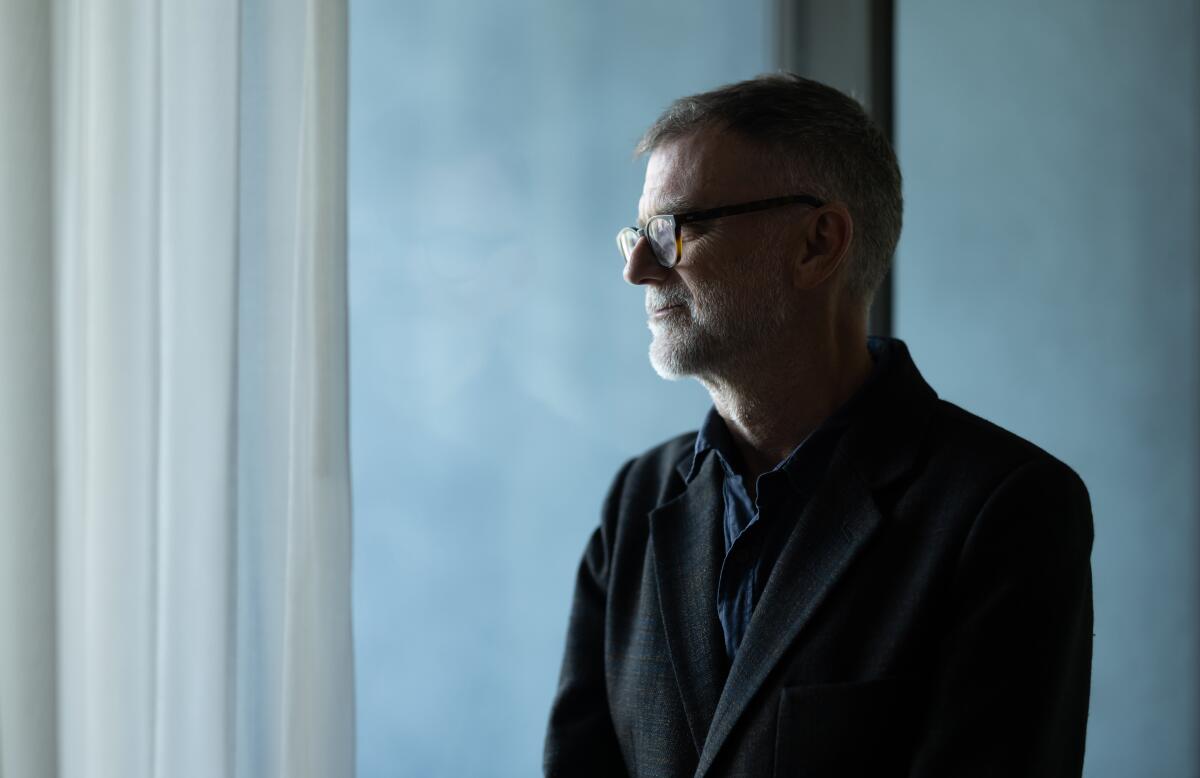
Filmmaker Paul Thomas Anderson is poised to release his latest film, “One Battle After Another,” an action thriller starring Leonardo DiCaprio, Sean Penn, Benicio del Toro, Regina Hall, Teyana Taylor and Chase Infiniti.
(Christina House / Los Angeles Times)
He’s made the most incendiary movie of the year. But Paul Thomas Anderson remains an optimist: The director of “Boogie Nights” and “There Will Be Blood” returns with an angry epic about American dissent, born from grappling with Thomas Pynchon’s “Vineland.”
Jenny Han on ‘The Summer I Turned Pretty’ series finale and why Belly had to go to Paris: The author, producer and showrunner knows fans are restless about how her hit Prime Video series might end, but she says she “loves surprising people.”
Troy Kotsur made you laugh and cry in ‘CODA.’ But in ‘Black Rabbit,’ he wants to scare you: The Deaf Oscar winner plays a vicious gangster in Netflix’s crime thriller “Black Rabbit” opposite Jason Bateman and Jude Law.
Commentary: Are the ‘Downton Abbey’ and ‘Conjuring’ finales essentially the same movie?: The recent films appear to occupy the opposite ends of the franchise universe. But were they really so different after all?
Turn on
Recommendations from the film and TV experts at The Times

A scene from “Lost in the Jungle.”
(National Geographic / Anit)
“Lost in the Jungle” (Disney+, Hulu)
If you haven’t canceled your Disney+ and/or Hulu subscriptions yet, I highly recommend this riveting, complex, exquisitely made documentary about the survival of, and search for, four Indigenous children in the Colombian jungle after the crash of a small plane that killed their mother and the pilot — and the fraught family history that brought them there. Proceeding with the force of a fairy tale, including an evil stepfather, incidentally helpful monkeys and confounding forest spirits, it on the one hand focuses on a resourceful 13-year-old who keeps three younger siblings, including a baby, alive in a dangerous world for 40 days, and on the other, the military and Indigenous searchers who learn to cooperate as they navigate weather, illness, “things that can’t be seen, not with human eyes” and a history of distrust marked by narco-guerillas, industrial exploitation and state neglect. Directors E. Chai Vasarhelyi, Jimmy Chin and Juan Camilo Cruz combine interviews with family members, searchers and soldiers, with footage from the forest and line animations illustrating the children’s experience into something suspenseful, strange and beautiful. — Robert Lloyd
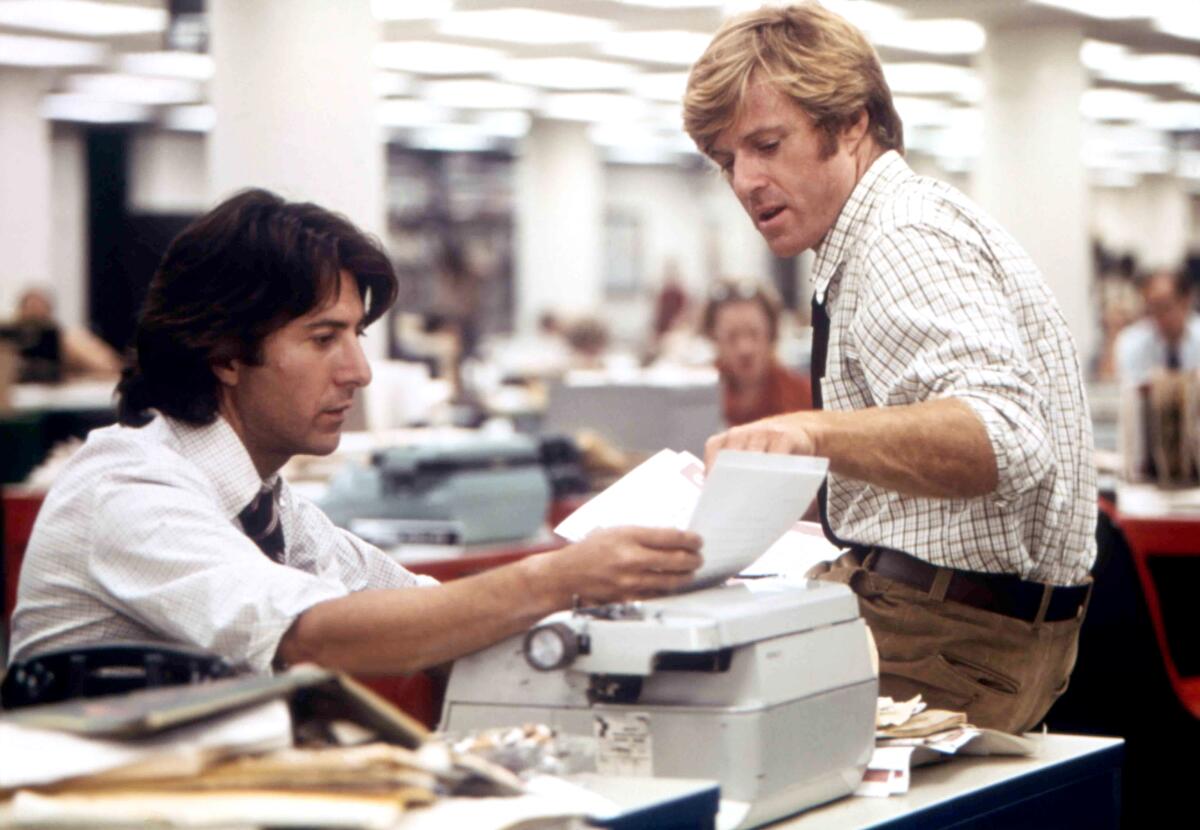
Robert Redford, right, with Dustin Hoffman in a scene from “All The President’s Men.”
(Sunset Boulevard / Corbis via Getty Images)
“All the President’s Men” [VOD]
It’s stands as one of the most discerning and potent films ever made about the crucial and essential role of journalism as a public watchdog in holding political leaders accountable and protecting democracy. Based on the book by Bob Woodward and Carl Bernstein, the 1976 film chronicles the unearthing of the Watergate scandal, tracking the duo’s time as Washington Post reporters — with Robert Redford as Woodward and Dustin Hoffman as Bernstein — trying to pin down the connection between Robert Nixon’s reelection campaign and the burglary and wiretapping at the Democratic National Committee headquarters in the Watergate complex that ultimately brought down Nixon’s presidency. It plays as a deeply engrossing thriller, and every scene between Redford and Hoffman, as dogged journalists whose work became enormously consequential and a turning point in American history, is gripping to watch. It’s a fitting film to screen this week — to reflect alone on one of Redford’s most powerful performances. — Yvonne Villarreal
Guest spot
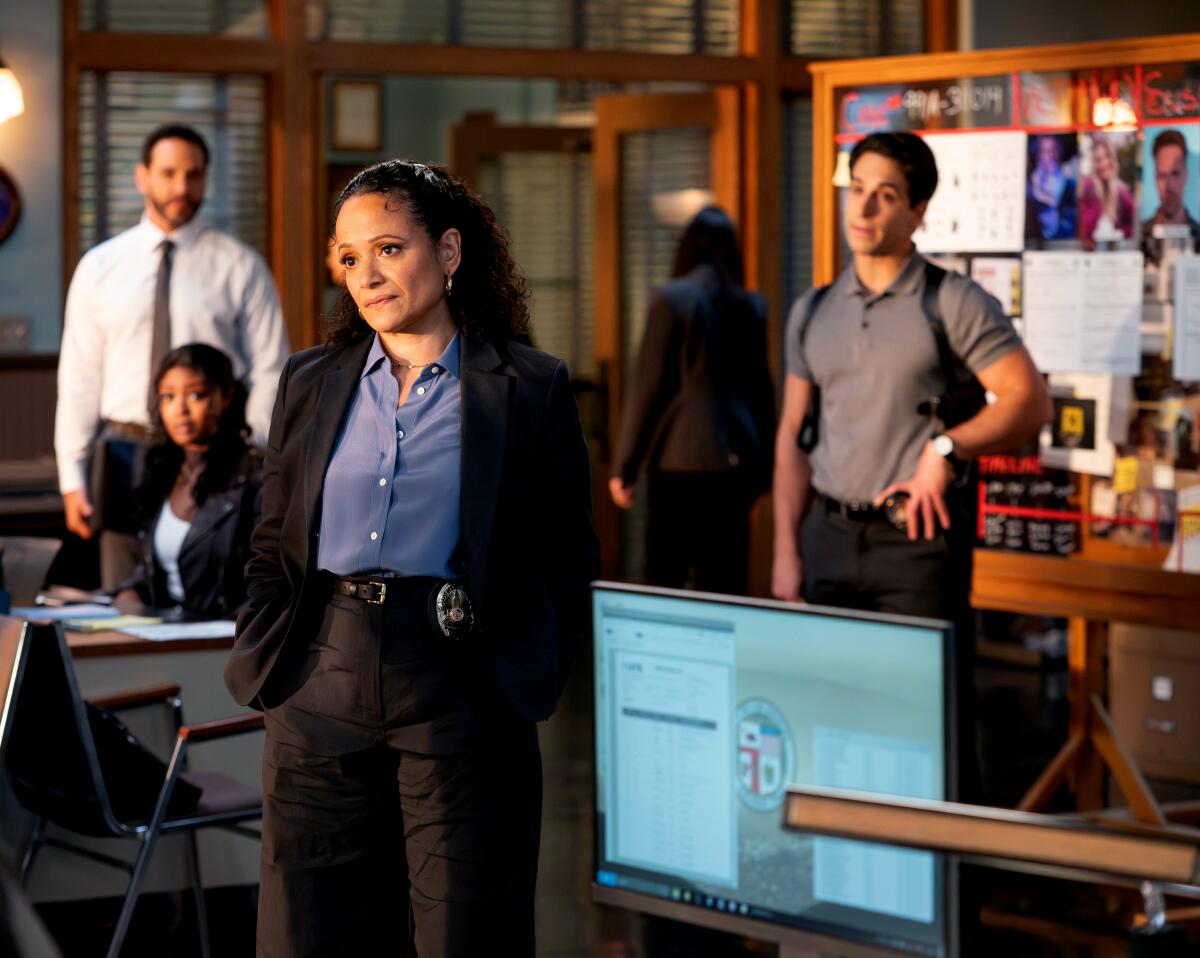
Judy Reyes in a scene from Season 2 of “High Potential”
(Jessica Perez / Disney)
A weekly chat with actors, writers, directors and more about what they’re working on — and what they’re watching
Every genius needs a little structure and guidance to keep them on course. In “High Potential,” Morgan Gillory (Kaitlin Olson) is a single mom with an exceptional mind who works as a cleaner at the police department and finds her way into detective work after successfully examining some evidence during her shift. But putting her unique talent to effective use couldn’t have happened if Lt. Selena Soto, the head of the major crimes division played by Judy Reyes, didn’t see Morgan’s potential and nurture it.
The quirky crime procedural has been a breakout hit for ABC since its launch last year and it returned this week for its second season; new episodes air Tuesdays, and are available to stream on Hulu and Disney+ the next day. Here, Reyes discusses how Soto’s approach as a boss came into focus this season and how she’s feeling about revisiting “Scrubs” 15 years after the comedy ended its run. — Yvonne Villarreal
How has Selena Soto come into focus for you this season? And can you share an anecdote of a boss looking out for you — however small or big — that has stood out to you during your time in the industry?
I think Soto saw herself in Morgan: someone for whom truly being themselves takes a lot of risks. She can’t be anything else, and the expectations from the world create a lot of problems with others who can’t handle the burden of those being completely unique.
My first manager took a huge chance on me at the restaurant I worked in as a hostess for years in NYC. She and her husband were regulars, and her husband chatted me up one night, and when I confessed that I was an actor, he convinced his wife to take a meeting with me, and she convinced her associates to give me a chance, and the rest is history.
Morgan is a cleaner with an exceptional mind who found her way into detective work after examining some evidence during her shift at the police department. What’s a career you’d love to pivot to if given the chance?
I always wanted to be a gymnast. Or some kind of athlete … tennis! You asked …
You’ll be reprising your role as Carla in the new “Scrubs” series. What does this moment bring up for you? What intrigues you about revisiting this character 15 years later?
I’m filled with gratitude and appreciation. I recognize how in my youth I took for granted the adventure and opportunity. I’m moved by how much people love the show and Carla, and how much all of it mattered to fans in different stages of their lives. I’m overwhelmed with the gift of being part of a magical moment in TV, and to get to revisit it as adults with the same folks is exciting because Bill and the writers are so daring with their humor and drama. I just know Turk and Carla keep going strong in their marriage and continue in their friendship. I’m honored by what this character continues to mean to Latinos, especially in this time.
What have you watched recently that you are recommending to everyone you know?
I’ve watched “Hacks” [HBO Max] because I’m obsessed with Jean Smart. I’ve watched “The Summer I Turned Pretty” [Prime Video] because I need to connect to my teenager and it’s a fun love/hate watch. I watch “Abbott Elementary” [Hulu, Disney+, HBO Max] because it’s f— funny and you can’t go wrong with it; it reminds me of “Scrubs” [Peacock, Hulu, Disney+] in a lot of ways. I just started watching “Severance” and “Shrinking” [both Apple TV+]. “Severance” because it’s so original and “Shrinking” for the same reason; it also feels so familiar … and Harrison Ford and Jessica Williams.
What’s your go-to “comfort watch,” the movie or TV show you go back to again and again?
“The Devil Wears Prada” [Hulu, Disney+], “Girls Trip” [Tubi, Prime Video], “Bridesmaids” [Netflix], “Love & Basketball” [VOD] [and] any of “The Matrix” movies [VOD].

